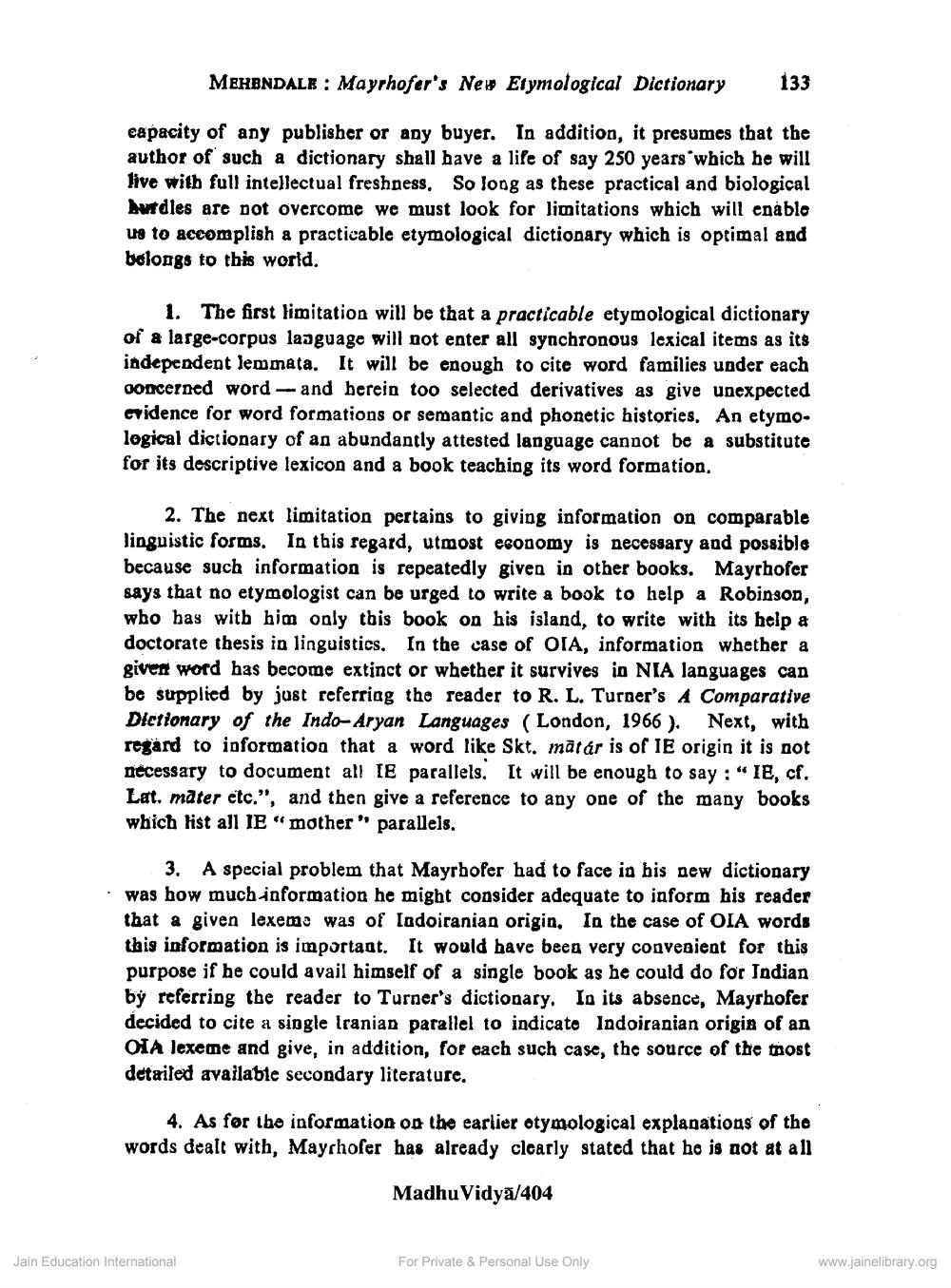________________
MEHENDALE : Mayrhofer's New Etymological Dictionary
capacity of any publisher or any buyer. In addition, it presumes that the author of such a dictionary shall have a life of say 250 years' which he will live with full intellectual freshness. So long as these practical and biological Aurdles are not overcome we must look for limitations which will enable us to accomplish a practicable etymological dictionary which is optimal and belongs to this world.
1. The first limitation will be that a practicable etymological dictionary of a large-corpus language will not enter all synchronous lexical items as its independent lemmata. It will be enough to cite word families under each concerned word and herein too selected derivatives as give unexpected evidence for word formations or semantic and phonetic histories. An etymological dictionary of an abundantly attested language cannot be a substitute for its descriptive lexicon and a book teaching its word formation.
133
2. The next limitation pertains to giving information on comparable linguistic forms. In this regard, utmost economy is necessary and possible because such information is repeatedly given in other books. Mayrhofer says that no etymologist can be urged to write a book to help a Robinson, who has with him only this book on his island, to write with its help a doctorate thesis in linguistics. In the case of OIA, information whether a given word has become extinct or whether it survives in NIA languages can be supplied by just referring the reader to R. L. Turner's A Comparative Dictionary of the Indo-Aryan Languages (London, 1966). Next, with regard to information that a word like Skt. mätár is of IE origin it is not necessary to document at IE parallels. It will be enough to say: "IE, cf. Lat. mater etc.", and then give a reference to any one of the many books which list all IE "mother" parallels.
3. A special problem that Mayrhofer had to face in his new dictionary was how much-information he might consider adequate to inform his reader that a given lexeme was of Indoiranian origin. In the case of OIA words this information is important. It would have been very convenient for this purpose if he could avail himself of a single book as he could do for Indian by referring the reader to Turner's dictionary. In its absence, Mayrhofer decided to cite a single Iranian parallel to indicate Indoiranian origin of an OIA lexeme and give, in addition, for each such case, the source of the most detailed available secondary literature.
4. As for the information on the earlier etymological explanations of the words dealt with, Mayrhofer has already clearly stated that he is not at all
Madhu Vidya/404
Jain Education International
For Private & Personal Use Only
www.jainelibrary.org




